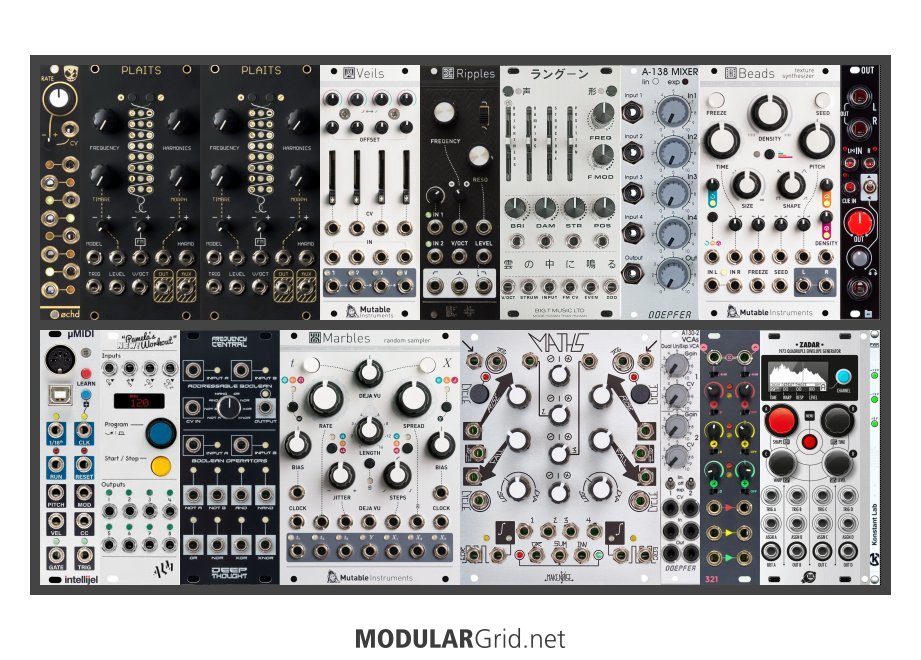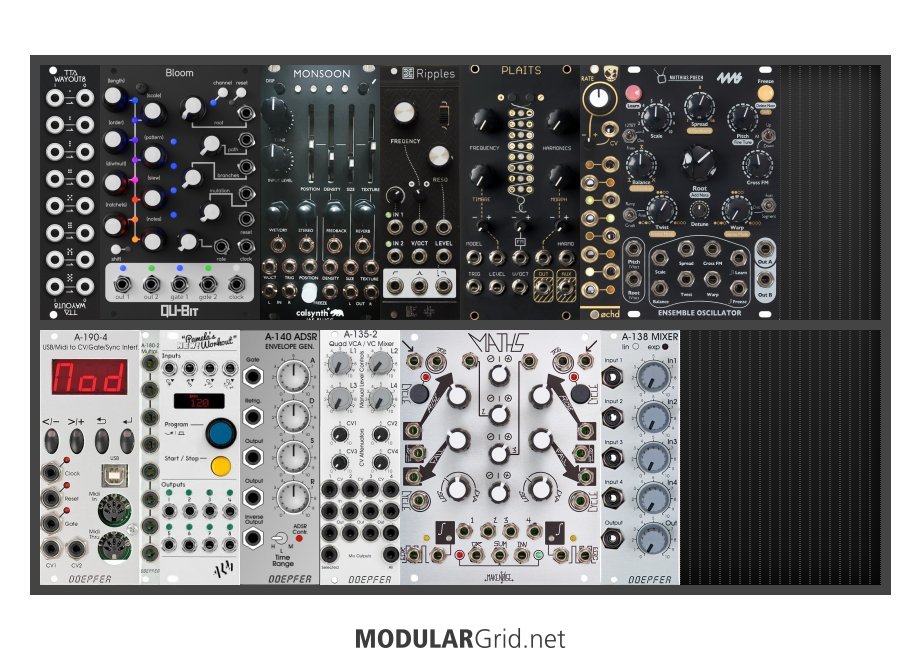Chords and polyphony in this build size just ain't happening. You could get a psuedo-chord memory-ish thing going with a few oscillators, but you can't possibly jam everything needed into a cab even twice this size. Or rather, you COULD...but the resulting control surface would be a nightmare!
I would suggest not looking at "voices" here. Instead, treat the entire thing as a "voice" of its own sort in amongst the rest of your production. Also, redundancy isn't a bad thing...it just depends on which modules you're talking about. 2-3 VCOs = good. 2-3 filters = OK. 2-3 Marbles = don't do that. Anything that you can detune or tamper with works nicely here (hence the multiple VCO suggestion). But in the end, systems like this are best for creating the "backdrop" for tracks...the atmospherics and such that "glue" a production together.
So...I banged around with this for a bit, see what you think. The idea here was to fill the cab out with supporting modules, and in the process a couple of the top row modules got bumped, mainly due to the picks being less useful than...well, have a look:

TOP: With the exception of the Ochd at the left end (that was where it had to go), this is all audio. Two Plaits, for the reason mentioned above. Then I added a Veils for VCA control over the oscillator outs, which is also useful in that the module's mixbus can be "broken" into 1 + 3 or 2 + 2 configurations, depending on what you're cooking up. This then has a choice of VCFs: either the Ripples clone or the Rings clone. Or run one into the other. No real rules on that. The VCFs sum via the Doepfer mixer, then this feeds the LEFT in on the Beads, which can generate a stereo result from a mono input. And that stereo goes out to the Befaco OUT, which has your isolated 1/4" outputs plus your headphone preamp and your overall stereo output level.
BOTTOM: First up, better MIDI interface that still takes MIDI and USB, but has a more comprehensive feature set AND less depth than the original Doepfer module. Then Pam's. Pam's lets you tamper with overlapping gates and such, which is why the Deep Thought is after this to provide alternate clocking signals, etc derived from Boolean operators working with the overlapping gate functions. Then Marbles, which is a primary "generative" device that can work on/with random inputs, ordering those into coherent CV streams. Maths follows, then a Frap 321 and a Doepfer A-130-2 dual VCA so that you have the ability to mix, modify, and level control your modulation signals. Then I put in a Zadar as the primary EG; no room for the Nin expander, but that should be OK here. Then a 1 hp blank followed by a KonstantLabs PWRchekr which lets you see the health of your DC rails.
By splitting the row functions, this gives you a very clear left-to-right flow for your audio path. Then modulation signals can come up from the lower row to affect that. Very clean, easy to sort out...which should be the way you WANT this to turn out. True, this might be better done in a 2 x 104 hp cab like a Mantis, but for right now...and since you've apparently got some hardware already, let's see how this feels.


